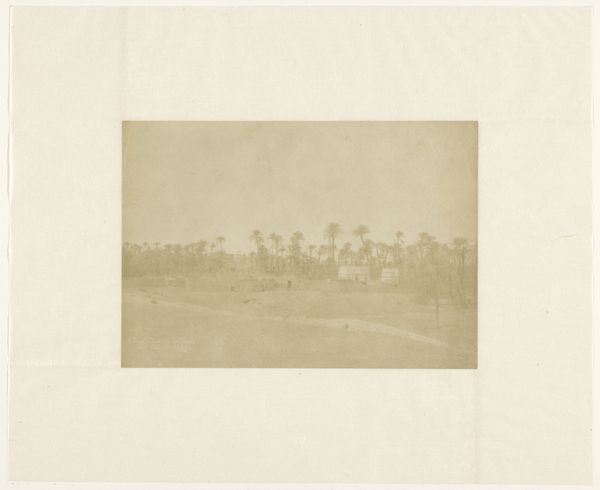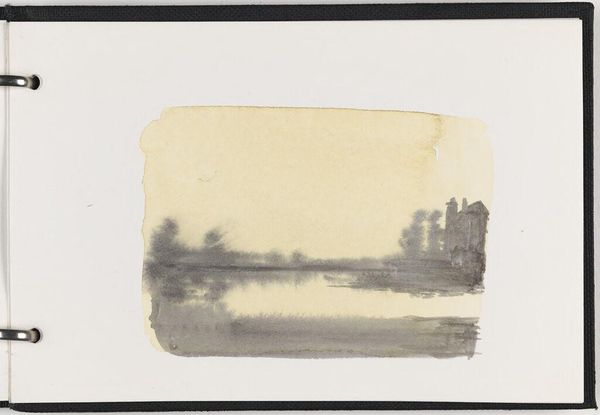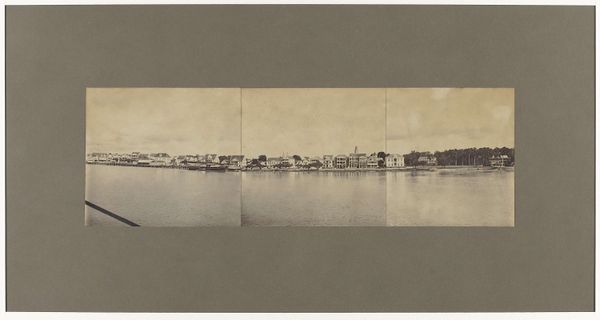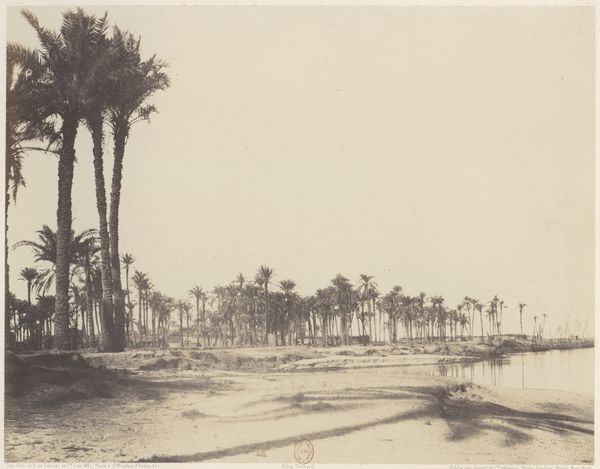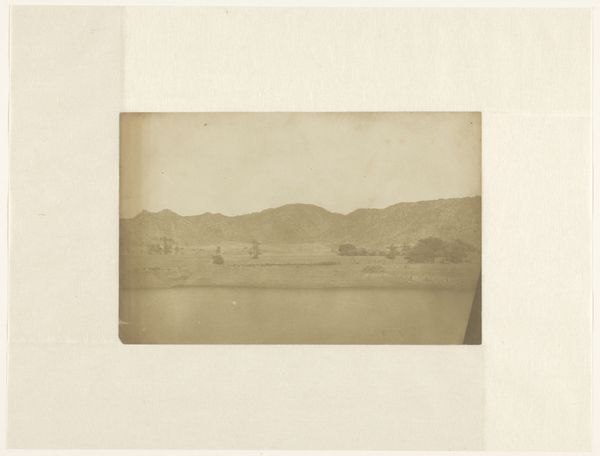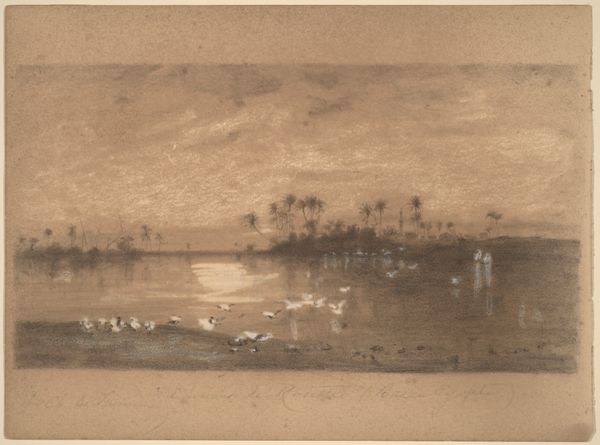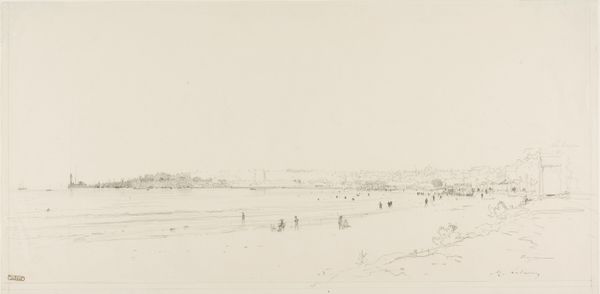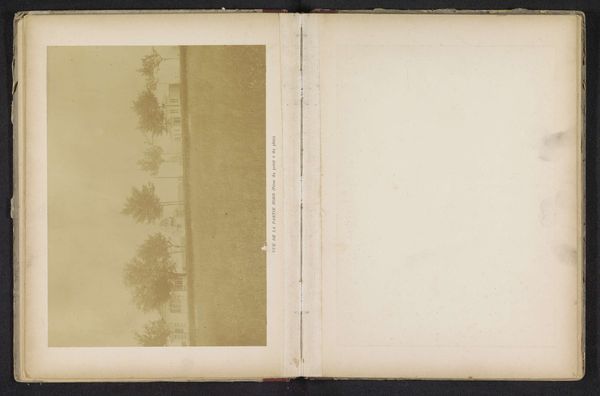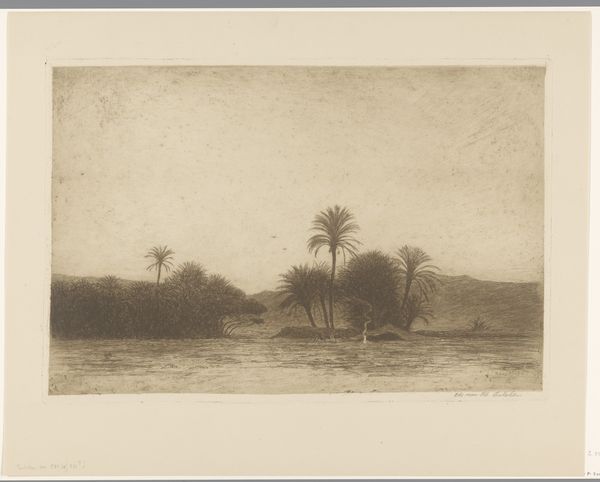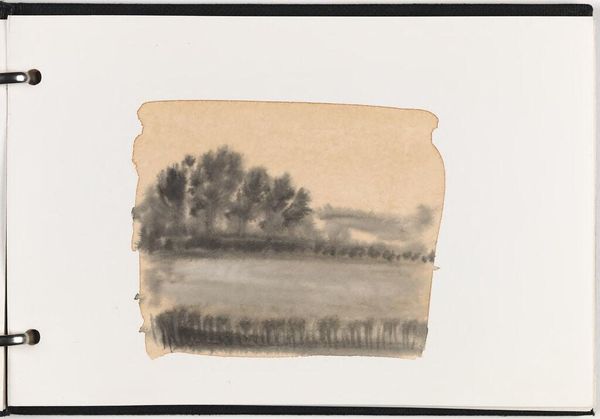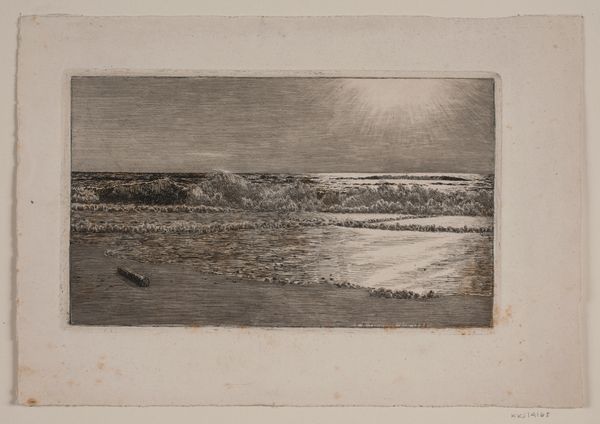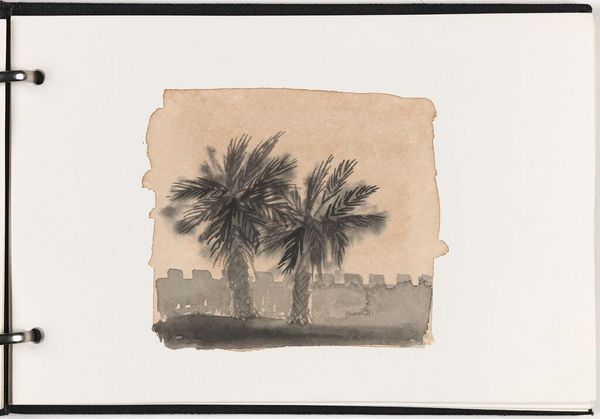![[Egypt] by Joseph-Philibert Girault de Prangey](/_next/image?url=https%3A%2F%2Fd2w8kbdekdi1gv.cloudfront.net%2FeyJidWNrZXQiOiAiYXJ0ZXJhLWltYWdlcy1idWNrZXQiLCAia2V5IjogImFydHdvcmtzL2MyYWIzZjJlLTI5NjctNGNjZC1iMDEzLTRjOWI5YzY4MzZlMS9jMmFiM2YyZS0yOTY3LTRjY2QtYjAxMy00YzliOWM2ODM2ZTFfZnVsbC5qcGciLCAiZWRpdHMiOiB7InJlc2l6ZSI6IHsid2lkdGgiOiAxOTIwLCAiaGVpZ2h0IjogMTkyMCwgImZpdCI6ICJpbnNpZGUifX19&w=3840&q=75)
daguerreotype, photography
#
landscape
#
daguerreotype
#
ancient-egyptian-art
#
photography
#
ancient-mediterranean
Dimensions: Image: 3 3/4 × 9 7/16 in. (9.5 × 24 cm)
Copyright: Public Domain
Curator: This haunting vista before us is a daguerreotype simply titled "[Egypt]", created between 1842 and 1844 by Joseph-Philibert Girault de Prangey. Editor: My first impression is one of tremendous stillness. There’s an almost sepulchral silence radiating from the composition, a heavy stillness hanging over the landscape. Curator: Yes, the stillness is striking. Note how de Prangey uses the horizontal format to emphasize the vastness of the scene. The buildings on the horizon are balanced by the reflecting pool, creating a rigorous symmetry. It's an intriguing tension between constructed and natural space. Editor: Absolutely, and the reflecting pool is incredibly evocative. Water, particularly in ancient cultures, symbolized creation, purification, and the passage between worlds. The reflected buildings take on an almost ghostly quality, as if peering into the past, perhaps a visual encoding of collective cultural memory. Curator: Fascinating point. It's also worthwhile considering the constraints of the daguerreotype process itself. The long exposure times would necessitate a static scene. Yet, paradoxically, the soft blur and limited tonal range lend an atmospheric depth that a more sharply focused image might lack. It's less about mimetic accuracy, and more about atmosphere and structural harmony. Editor: True. Beyond that, there is an elegiac quality here. We see these structures now as ruins, relics of an empire, yet through the lens of early photography they become immediate, present. A tangible reminder of civilization's cyclical nature. This medium creates its own visual symbols and mythologies, I believe. Curator: That idea of “mythologies” in visual culture strikes me as insightful here, but from my perspective I'm most struck by the interplay of horizontal and vertical, the manmade structures against the palm trees and reflecting pool; De Prangey appears to be composing with these pure geometric volumes, not documenting some literal “truth.” Editor: Ultimately, I feel that de Prangey’s “[Egypt]” exists as a powerful visual symbol reminding us of lost grandeur, cultural legacy, and the inevitable march of time—echoing still for nearly two centuries now. Curator: I agree entirely. While attending to these historical significances, its formal clarity is difficult to overstate; De Prangey achieved something masterful, not simply capturing a place but constructing a feeling.
Comments
No comments
Be the first to comment and join the conversation on the ultimate creative platform.
